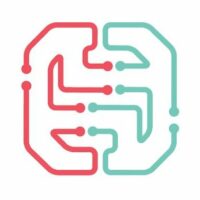THE EDTECH PODCAST: AUSTRALIA & ED TECH
DO STUDENTS MISS TRUST?
Learning and teaching will change in the digital age. Let’s make sure we shape it right.
Personalized learning needs to die.
I could sit here and argue that it needs to die because companies are trying to replace our most valued resource – teachers – with computers and algorithms that will sterilize learning. I could also easily argue it’s because privatizing education and giving learning data to closed corporations are the biggest mistakes we’ll ever make. But although I think these are both very valid reasons, I’m saying this for a much simpler reason: personalized learning is never going to work and we’re wasting our time.
As an evolutionary biologist, I know a thing or two about why we behave the way we do. If you look at our evolutionary past and our current society, it’s clear that humans are social creatures. This is one of the reasons that social games and apps have the most users and continue to be so popular. We crave connectivity with one another, for better or for worse. But personalized learning is the antithesis of social connectivity because it encourages isolation during one of the critical, formative periods of our lifetime.
I can see why people may think that a personalized approach can have an enormous benefit for learning. Imagine a student that is under- or over-performing in class, and I’m sure that you’ve imagined that they are bored and disengaged because they are either over- or under-challenged. Imagine then, that we could moderate which learning tasks an individual student receives so they are in that perfect zone – this flow – where they are perfectly challenged by an algorithm that knows exactly what they need. They are therefore driven to continue to want to learn. An appealing picture is thus painted– one in which every student can flourish.

But the reality is much different. Learning alone is daunting unless you have that internal drive that only someone with experience can have. We also know what happens to kids that are isolated as we’re seeing it more and more in this digital age: they become depressed.
At the same time, learning alone doesn’t prepare anyone for a job in the future as there is no job in the world where employees work alone. And as our future becomes more diverse, so will the teams we work with, meaning that social and networking skills will be of utmost importance. If our current political climate demonstrates anything, it’s that in their formative years, we should be spending more time socializing students so they realize the diversity of backgrounds people come from and what that means for the future that we’ll have together.
But there are two things that bother me most about personalized learning. The first is that machine learning algorithms can only be as good as the data that are used to train them. Early data by companies are often from a particular group of students – affluent and white. This isn’t because these companies necessarily target these groups, it’s because the schools that house these groups are the ones that can most afford to try something new and different. So what does it mean when early data collected only represents how a fraction of the population thinks and learns?
And the second aspect is that an individual is more than the sum of their decisions and how they respond to a particular question at a particular time. That’s because the factor that underlines all these aspects is the thing that makes us human – our emotions. Our emotions alter how we behave, perceive the world, and perform. We could be the smartest person in the world, but if we are feeling down about ourselves, we can struggle to get through the day.
This is why having a human component in education is so important. Teachers, through a capacity for empathy amplified by years of experience with students, know when students need a hug more than anything else. They can tell that when a student is being disruptive, it’s not because they want to spoil others’ learning, but because it’s a cry for help. Humans are very in tune with one another’s emotions and empathy is sometimes what’s needed more than anything else.
By now you’re probably asking yourself: why should we bother with technology if it’s not going to help our students learn? I think technology can do this, just not in the way we’re thinking about it currently. And I think that technology can make the biggest impact in science by taking the fear away and replacing it with wonder, making the intangible clear, and speeding up the scientific process.
Natural born scientists
From birth, children learn by doing. We don’t learn to walk by watching others or learn to talk solely by listening to others. We learn by trying, failing, and trying again. What makes us experts is thus nothing more than practice.
What fascinates me about children is each and every one of them is a born scientist as they are innately curious about the world around them. They observe, they touch, they ask questions, and when they’re alone, they try to figure things out. When boiled down, scientific inquiry is nothing more than this.
What I think scares people about science is not the curiosity, it’s explaining the implications of that curiosity when the answer is not simple. To answer a complex question requires that an individual has a solid grasp of the problem, understands how to collect data to test that problem, and then how to visualize and analyse those data. This becomes even more difficult when you’re studying the intangible.
As an evolutionary biologist, I often explore the invisible. You don’t see evolution happen, you measure the change in traits in a population over time. You can’t see gravity, you see the effect it has on things. You don’t see protein translation, but you can measure how changes in protein concentrations affect bodily functions. And you’ll never feel gravitational waves and you’ll need complex equipment to measure something happening elsewhere in the universe.
But just like walking and talking, learning how to determine what to look for, what to measure, and how to measure it can only come from practice. But practicing science in the classroom or at home is difficult, and many view it as daunting. Not only do you often have to set up all this equipment, but you have to train students in how to use it, explain how to collect data and which theories these data are exploring. In other words, you have to do all the most boring stuff first.
Imagine how many refrigerators all over the world would be bereft of art if before kids were allowed to finger paint, we explained the history of art, the natural products that were initially used to create different colours, and asked students to make their own paper. Instead we let kids fall in love with art by letting them create and figure things out.
As they age and attend different classes, kids may learn about the history of different art movements, how perspective can be demonstrated, and how emotion can be displayed through colour. We let them create and explore, and then when they’re hooked, we explain the theory. Those that are more interested in art end up choosing a career in it and delve more deeply into theory and explore it from a completely different perspective, sometimes even creating something never before seen.
It’s true that not everyone becomes an artist, but at some level, every adult can appreciate art. For example, every adult understands the different tools and media that can be used to create art. Adults attend museums and may even discuss why they feel strongly about why something is or isn’t art.
Why is it that we can’t do this with science?
What if instead of creating this barrier that consists of learning theoretical concepts and nomenclature, and just like a room full of paints, crayons, and paper, we provide students with the tools they need to explore science? What if we could make the collection and visualization of data less daunting so that it just requires students to play and interact? And what if this interaction and exploration used some of the tools students were most comfortable with – mobile devices.
Would these aspects take the fear out of the scientific process? Would they encourage more discussion because all the difficult steps that often feel paralysing – the planning, the data collection, the maths – are all simplified to social interactions? Would this allow students to appreciate and understand science at a higher level even if they don’t fully grasp the theory?
I am betting that it will. In fact, our team at arludo and all the researchers and teachers that are working with us are betting on it as well.
Our vision of the future of education
Research shows that students feel more comfortable around the mobile devices they use every day. So why fight this? That’s why we at arludo have decided to use these mobile devices as a tool that focuses on facilitating social interactions to get students working and thinking together.
The beauty of mobile devices is that because students have been using them for all their lives, they’re experts. All I ever have to do is ask them to download the app that we’ll be using that day and students begin before I’ve even started outlining the instructions.
But what I love the most about our approach is that as students are interacting with one another, their choices, wins, and losses as they pertain to the concepts they are being taught are stored and anonymously visualized in front of the class in real time. They’re collecting data and becoming scientists and they don’t even realize it.
We’ve made the most difficult aspects of science – the experimental design, the data collection, and the data visualization – intuitive, fun, and automatic.
Now teachers and students can focus on reflecting on what they’ve collected. What does this figure illustrate? Why is there all this variation? What do you think is causing this variation? How could we test to see if that’s the case? Is there a problem with how we collected the data? Is there something that could bias our results?
We’re allowing teachers to focus on leading discussions rather than setting up and organizing a classroom. Teachers can encourage students to think about the data, and through discussions, students begin developing ideas and theorizing about concepts exactly like scientists do. And because these data are personal to the students, just like scientists, students have a particularly unique insight into these data.
With over twenty different mobile applications in our library we’ve taught students numerous scientific concepts. We’ve allowed students to run experiments with augmented reality crabs to learn about animal contests and experimental design. We’ve asked them to become birds to figure out how animals try to impress a potential mate. We’ve asked them to become predators to see how their predation affects how populations evolve. And we’ve even asked them to become pirates to teach about the tragedy of the commons, the concept that a shared resource will be overexploited due to each individual’s selfish desire.
Each application teaches a different topic in a unique way and engages students to become involved in science. Our goal is to continually create applications that help teachers with the most difficult concepts for students to understand. We’re also working with researchers to ensure that these applications explore the most pressing questions on which scientists are currently working. This means that students will have a deeper connection to the scientific research that is currently happening.
We at arludo are creating mobile applications that help turn students into scientists by letting them jump right into scientific inquiry. Learning researchers call it experiential learning. We just think it feels natural.
Michael Kasumovic is an Associate Professor of Evolutionary Biology at UNSW Sydney where he researches how the social environment and interactions influences an individual’s self-perception of their ability and their behaviour. He is also the founder of arludo, a company seeking to increase interest in STEM topics and improve scientific thinking for students of all genders, ages, and socioeconomic strata.

